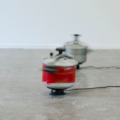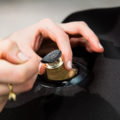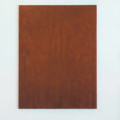Amélie Scotta: morphogenesis and cybernetics, cities and forests
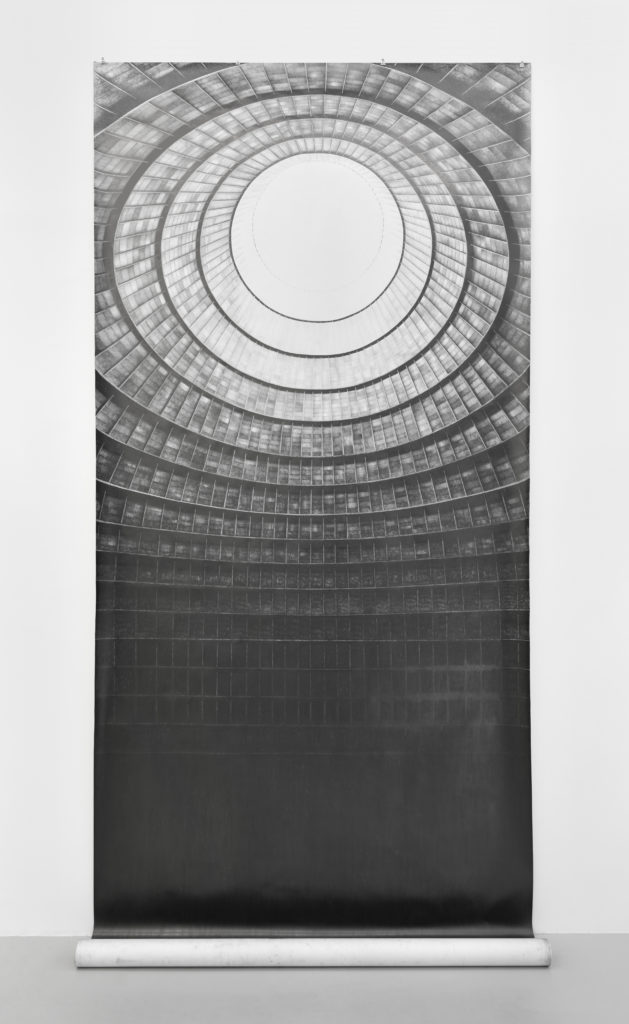
Sometimes, in an artist’s career, we observe moments of rupture, moments when things change, even if it means perhaps seeing linearity and homogeneity where they don’t exist. As if we were crossing a threshold. It’s not that it disappears, because unless you burn it all down, the legacy remains, but there is a passage. It’s meaning this “it”, we want to talk about it when we write. And that’s what happened, if you magnify the line, with Amélie Scotta. After representing the urban and architecture, she went into the forest, by the sea, everywhere, as long as it’s outside the city. The subject changed, but the techniques remained: different techniques, all related to the reign of drawing, a variety in the line and the levels of gray. First there was the graphite architectural line on paper, an ancient technique long prized by Amélie Scotta, a decontextualization drawing that extirpates the form from its environment, insists on its volumes. A graphic and sculptural transformation of the industrial offshoots of modernism, Ricardo Bofill’s Lake Arcades, infinite buildings, without forgetting some older projects, such as Bentham’s panoptic architecture – a surveillance project whose analogies with modern industrial architecture raise questions. These are all drawings in which Amélie Scotta has grasped a paradox. That of the singular beauty of their repetition and the minimalism of their uniformity, and the horrors of standardization and promiscuity, that of an architecture that is utopian in its intentions and origins, dystopian in its future, where the gray of the carbon is reminiscent of concrete. Recently, Amélie Scotta has also applied this technique to natural motifs, monumental and horizontal trees, which barricade the walls where they hang. Trees that have suffered a fall, whose fallen trunk suggests something other than itself, perhaps the horizon, perhaps abdication. There is also the scalpel on scratch cards, which does not proceed by addition but by removal of matter, which allowed Amélie Scotta, by small touches, point by point, to retranscribe the minute variations of light, to build luminous architectures whose subject is the visual pollution of the city, advertising billboards in particular, the content of their message disappearing behind their viral light. To draw the white by scratching on the black, as the light conquered the night in the city (Les Monades). The chalk technique (Veilleuse) feeds the same ambitions through large in situ projects. The use of reels of thermal paper makes it possible to deploy a whole range of natural and architectural motifs on one of the foundations of our society, the receipt (Scapes): a stormy sea, the striations of branches, the “thousand windows” of Meudon-la-Forêt by Fernand Pouillon, the balconies of Benidorm, etc. Coils, as if to stretch the motifs, to plunge into their potential infinity, to be damaged by their repetition.
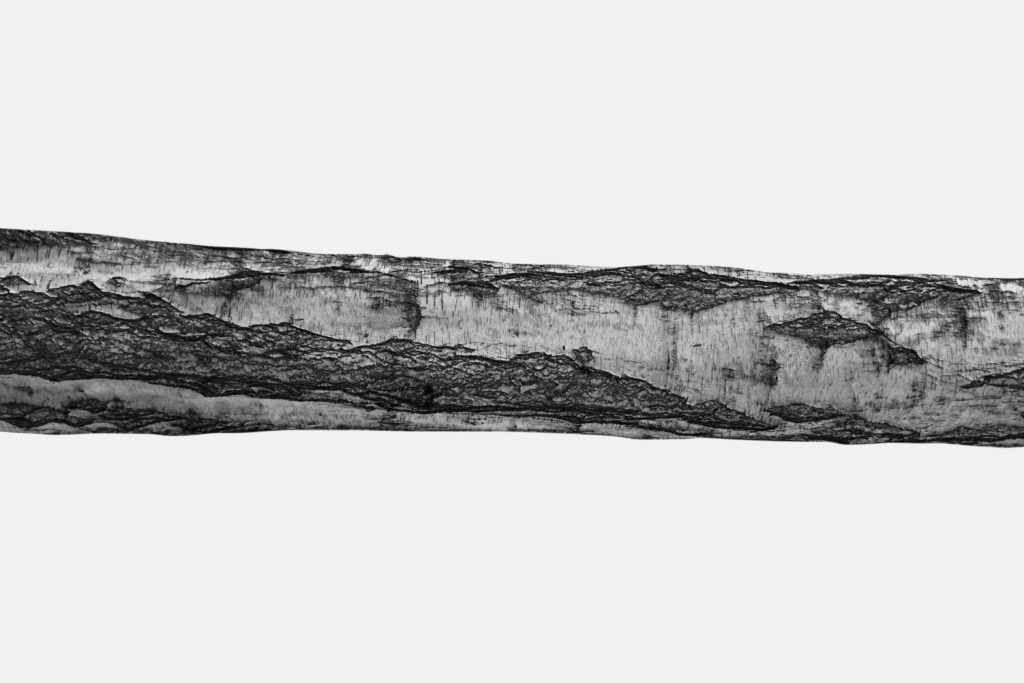
It would have been easy to gloss over this passage from the city to the countryside, this return from the rural exodus in the career of an artist who seems to espouse that of the world. With electricity, with the Internet, centralization no longer makes sense, we are everywhere, everywhere. But I believe that there is more to it all, especially the networks of connections that are woven between construction and architecture on the one hand, and growth and morphogenesis on the other. Morphogenesis is the set of laws determining the shape and structure of tissues, organs and organisms. By extension, it is applied to other fields, such as the growth of cities. “Morphogenesis”, etymologically, is the formation of form, a beautiful tautology, which relies on both the process and its product. Science is ancient, the Greeks were already interested in it, but it is experiencing a revival of interest in the twentieth century, with authors such as Alan Turing or Peter Stevens. Just as the temple column imitated the tree trunk, and the naos a kind of clearing, just as some pilasters designed by Gaudí for the Sagrada Familia decomposed the movement of the fall of a leaf, just as Richard Buckminster Fuller’s geodesic dome imitated certain viral concretions, biomimicry runs through the history of architecture.
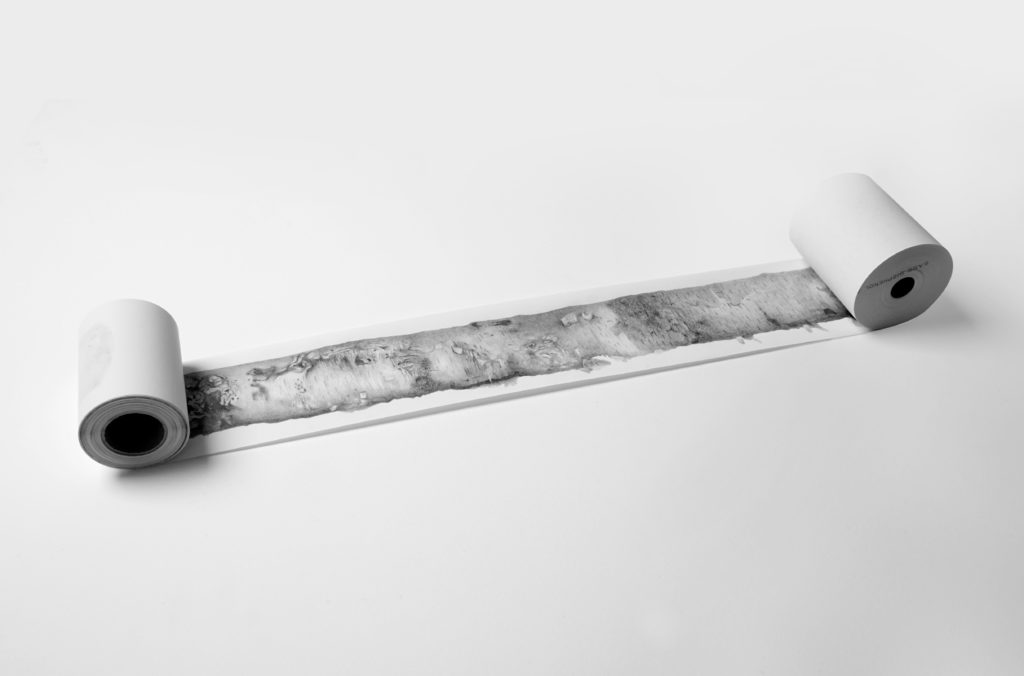
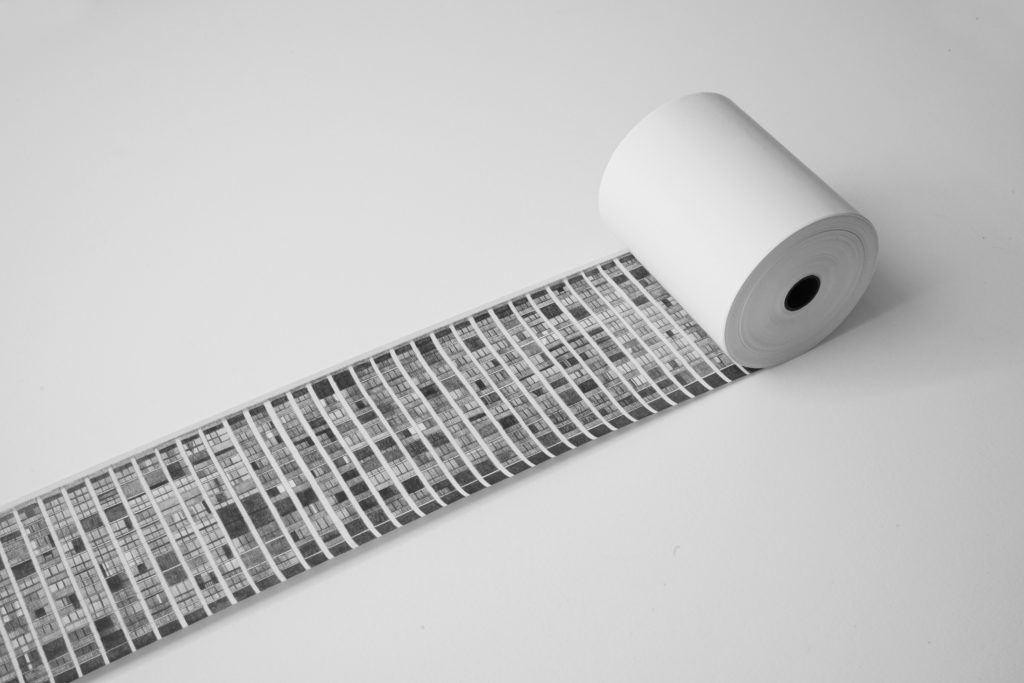
At the macroscopic level, cities connected to each other at night draw networks resembling synapses, arteries or tree branches (Veilleuse), and indeed Marshall McLuhan (Understanding Media, 1964) considered the city and its electrical networks as the exteriorization of human nervous systems. Conversely, vertical vision from the street provides urban canopies (Ciels) that are delicately carved out of the sky. But, beyond these few formal analogies, deeper correspondences exist. A kinship that is rooted in the formation of forms, in morphogenesis. The elements of nature, like the constructions of architecture, are built from systems, programs, from which we can grasp certain analogies, such as the replication of cells/modules that seems to be able to continue endlessly, the infinite and infinite variation of the same. Programs conferring harmony and beauty to what seems, at first glance, to be a profusion. As the performer gradually understands the score he or she is playing, the reasons for the composer’s choices, the spirit breathed into the piece, there is in Amélie Scotta’s drawing, and its alternation between architecture and the motifs of nature, such as the possibility of entering into the code that governed the growth of drawn, engraved or blown forms, which only repetition allows. From a thousand windows, from the striations of a tree or from the swell, you can’t see the end, but you enter the structure. This is what the English called “pattern”, both pattern and model. These correspondences, which are not immediate, if not hidden, are the result of an intelligence of the hand, a wisdom of forms, a reflection by doing.
« So then always that knowledge is worthiest, which is charged with least multiplicity; … that which considereth the simple forms or differences of things, which are few in number, and the degrees and coordinations whereof make all this variety. »
Francis Bacon, 1844.
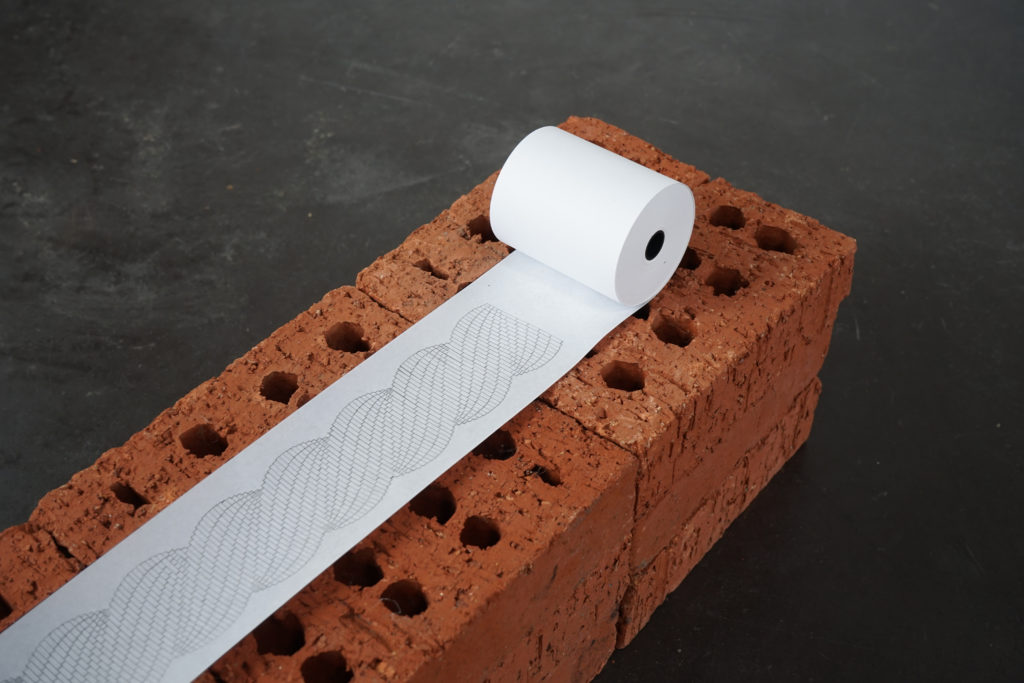
Without humans generally, but with their habitats in the broadest sense, Amélie Scotta’s drawings are a reflection of what we, eager to distinguish between nature and our cultures, might miss or forget. It is obvious that architecture and morphogenesis are subject to the fundamental laws of matter and its transformations, to the laws of space and time: gravity, the effects of scale, gravity and balance, etc.; one of the most fascinating being that both nature and architecture are limited by hexagonal concretions, no polygons of seven, eight or more sides, neither in one nor in the other. Even if the great urban projects of the 1960s and 1970s, those that interest Amélie Scotta, lost the original philosophy of modernism, they kept its program, its code. It must be said that modern architects, through the refusal of exterior ornament – absurd biomimicry – in favor of pure volumes, concentrated on the essential, the standardization of form and the replication of natural mechanisms through an attempt to reconcile industrialism, society and nature. As Alain Roger pointed out in his Short Treatise on Landscape (1997), the role of the artist as well as the architect is not to copy nature, but rather to create “models” that make it possible to imitate, model and even improve it. Le Corbusier attempted to achieve a vast synthesis of the machine, geometry and nature, Charlotte Perriand called her studios “cells” and was inspired by the processes of nature’s replication, Franck Lloyd Wright offered with the Fallingwater House one of the manifestos of organic design, just as the Bauhaus renewed the discipline by affirming a general methodology based on natural laws and those of the human spirit. New technical means and industrialization, which cut modern architecture off from its utopian origins of symbiosis with the environment, have placed this consubstantial link with the harmony of nature at the service of standardization and simplification. In spite of its violence, the mimetic relationship to the principles of morphogenesis has remained, a sort of fundamental law of growth, a code that asserts itself in a context that is its own, natural or social, and that governs its final form – in nature, according to the viscosity, density, elasticity or resistance of materials and environments, in humans through science, capital… In Le Corbusier’s “five points of a new architecture”, architecture and morphogenesis respond to each other, the free plan and the steel framework distinguish the trunk from the ramifications of the building, and allow growth, like plants, from the inside and then radiate, with a flat roof and a banded window maximizing exposure to the sun, etc. Just as water flows by the simplest path, just as the circle is such a common natural form because it involves the balance of energies, just as the right angle is the human form par excellence – except for certain minerals – because its replication is all the simpler, architecture and morphogenesis respond to the same principle of simplicity and efficiency.
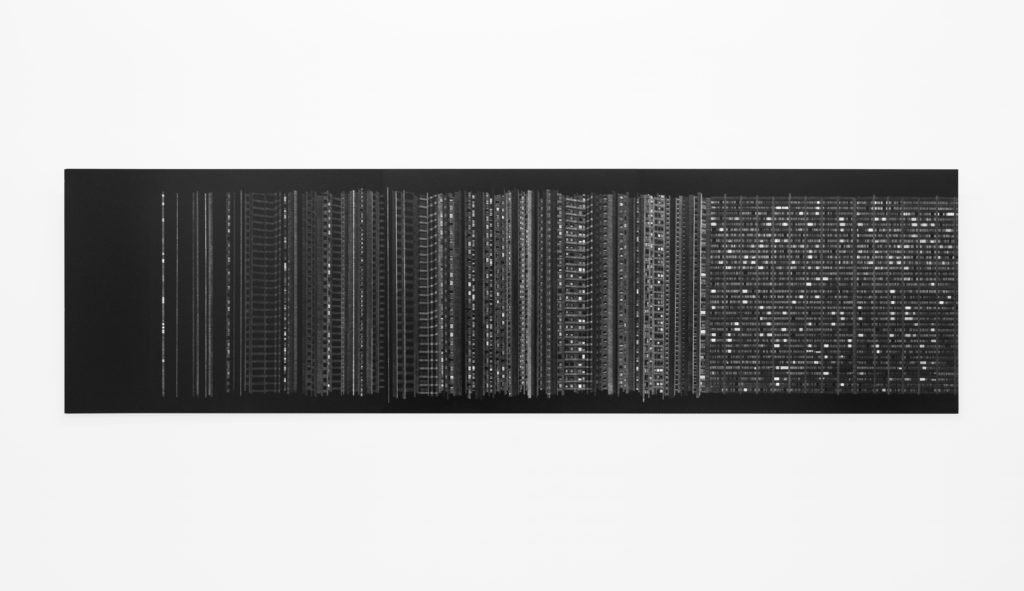
All this breaks with the old binarities, and we like that in art, to believe that it has been in the spirit of time for a while now. Thinking about the human and the environment, the distinction allowing exploitation, just as we think about nature and culture. The awareness of a union that must give way to symbiosis. Instead of trying to shape nature in our own image, of wanting to dominate it at all costs, we can adopt a more humble behavior, thanks to constructive observation and study of the natural elements. The neurobiologist Henri Laborit, in his essay L’Hhomme et la ville (1971) constructed a system confronting the human being, the biological being, and his environment, the urban ecosystem. He thus saw all cybernetic correspondences between the city and nature (complex systems governed by energetic and informational necessities to the maintenance of a structure). He saw the city as a secretion or a membrane. Without confusing it with the organism – he clearly stated the non-correspondence of biological and sociological laws – he made it, like cell colonies, the history of communities with new formations and relationships, and confronted technocratism with paradoxes and issues that have not changed since the 1970s: the need to modify our behavior in order to approach a new cellular organization of our society, so as not to succumb to the perils that lie ahead of us, one ecological, the other from a society with a capitalist organization based on growth, exploitation and waste of natural resources and the creation of exclusions. So there is something fundamental at stake, I believe, in the evolution of Amélie Scotta’s work. A new axis which, rather than slavishly opening up a new series in her work, deepens, structures and complicates what has already been done, all this recalling the symbiotic relationship between architecture (the human being) and his environment in the broadest sense, a relationship of reciprocity, while the discipline is undergoing a new revolution in its relationship with nature, with the development of plant cities, archiborescence systems, biosynthesis energy, etc.



